Group 27 and Group 24 Batteries What Are the Key Differences
When it comes to selecting the right battery for your vehicle, RV, or boat, understanding the differences between various types of batteries is essential. Two commonly compared batteries are the Group 27 and Group 24. While both are popular choices for different types of vehicles and applications, understanding their differences can help you choose the best option for your needs. In this article, we will explore the key differences between Group 27 and Group 24 batteries, including their size, capacity, performance, and specific use cases. By the end, you will have a better understanding of which battery is the right choice for your specific needs.
- Understanding the Size Differences Between Group 27 and Group 24 Batteries
- Capacity and Performance Differences Between Group 27 and Group 24 Batteries
- The Performance Differences in Cold Cranking Amps
- Durability and Lifespan Differences
- Cost and Value for Money: Group 27 vs Group 24 Batteries
- Which Battery Is Right for You?
Understanding the Size Differences Between Group 27 and Group 24 Batteries
One of the most noticeable differences between Group 27 and Group 24 batteries is their size. The physical dimensions of a battery are an essential factor when choosing the right one for your vehicle or equipment. Let's look at the size comparison to understand how these two types of batteries differ.
Group 27 Battery Dimensions
A Group 27 battery typically measures about 12.06 inches (306 mm) in length, 6.81 inches (173 mm) in width, and 8.43 inches (214 mm) in height. This larger size gives Group 27 batteries more room for the internal components, which directly impacts their capacity and power output.
Group 24 Battery Dimensions
On the other hand, a Group 24 battery is slightly smaller, with typical dimensions of 10.25 inches (260 mm) in length, 6.81 inches (173 mm) in width, and 8.87 inches (226 mm) in height. While it is shorter in length than a Group 27, the height of a Group 24 is slightly taller. The size differences between these two batteries play a significant role in their performance and how they fit into different vehicles or equipment.
>>See also Do Battery Chainsaws Require Chain Oil
Capacity and Performance Differences Between Group 27 and Group 24 Batteries
Capacity is another critical factor when considering the differences between Group 27 and Group 24 batteries. The capacity of a battery is usually measured in amp-hours (Ah), which indicates how much power the battery can store and provide over time. Higher capacity means longer running times and greater performance, which can be essential for applications requiring consistent power output.
Group 27 Battery Capacity
Group 27 batteries typically have a higher amp-hour rating compared to Group 24 batteries. The capacity of a Group 27 battery can range from 75Ah to 120Ah, depending on the specific model and brand. This higher capacity allows Group 27 batteries to store more energy, providing more reliable power over a longer period. As a result, Group 27 batteries are often favored for larger vehicles, RVs, boats, and applications that require sustained power, especially over longer periods of time.
Group 24 Battery Capacity
In contrast, Group 24 batteries typically have a lower capacity, ranging from 60Ah to 85Ah. While they may not store as much energy as Group 27 batteries, they are still suitable for smaller applications where high capacity is not as critical. Group 24 batteries are often used in smaller boats, RVs, and other equipment where compactness and lighter weight are more important than maximum power storage.
The Performance Differences in Cold Cranking Amps
Cold cranking amps (CCA) are another important specification when comparing the differences between Group 27 and Group 24 batteries. CCA measures a battery’s ability to start an engine in cold temperatures. A higher CCA rating indicates better performance in cold weather, which is especially important for vehicles used in colder climates.
Group 27 Battery CCA Rating
Group 27 batteries generally have a higher CCA rating than Group 24 batteries, making them better suited for cold weather conditions. The CCA rating for Group 27 batteries typically ranges from 700 to 1,000 amps, depending on the model. This makes Group 27 batteries ideal for vehicles and equipment that need to perform in low-temperature environments.
Group 24 Battery CCA Rating
Group 24 batteries, while still capable of providing sufficient cold cranking power, usually have a lower CCA rating compared to Group 27 batteries. The CCA rating for a Group 24 battery typically ranges from 500 to 800 amps, which makes them more suitable for milder climates or applications where extreme cold temperatures are not a concern.
Durability and Lifespan Differences
When comparing the differences in durability and lifespan, it’s essential to consider the materials used, the design of the battery, and how it is maintained over time. A longer-lasting battery will provide more value in the long run and reduce the frequency of replacements.
Group 27 Battery Durability
Thanks to their larger size and higher capacity, Group 27 batteries tend to last longer than Group 24 batteries when properly maintained. The larger internal components allow Group 27 batteries to better handle deep discharges and extended use, resulting in a longer lifespan. They also typically feature thicker plates and enhanced corrosion resistance, which contribute to their durability.
Group 24 Battery Durability
While Group 24 batteries are generally reliable, their smaller size and lower capacity mean they may not handle as many deep cycles or heavy usage as well as Group 27 batteries. This results in a shorter lifespan, especially if used in applications that demand high power output over extended periods. However, if properly maintained and used in appropriate applications, Group 24 batteries can still provide reliable service for many years.
Cost and Value for Money: Group 27 vs Group 24 Batteries
Cost is often a deciding factor when choosing between Group 27 and Group 24 batteries. Due to their larger size and higher capacity, Group 27 batteries tend to be more expensive than Group 24 batteries. However, the additional cost may be worth it if you need more power and longer runtimes.
Group 27 Battery Cost
The price of a Group 27 battery typically ranges from $100 to $200, depending on the brand and capacity. While this is a higher upfront cost, the added capacity and longer lifespan can provide better long-term value, especially for larger vehicles or applications.
Group 24 Battery Cost
In contrast, Group 24 batteries are generally more affordable, with prices ranging from $70 to $150. While they may not offer the same capacity or performance as Group 27 batteries, they are a cost-effective option for smaller vehicles or applications that don’t require as much power.
>>See also Converting Watt Hours To Milliamp Hours A Simple Guide
Which Battery Is Right for You?
When choosing between Group 27 and Group 24 batteries, it ultimately comes down to your specific needs and the type of vehicle or equipment you are powering. Consider the following factors when making your decision:
Use Case
If you are powering a larger vehicle, RV, or boat that requires extended running time and high power output, Group 27 batteries are likely the better choice. Their larger capacity and higher CCA rating make them well-suited for demanding applications.
If you are powering a smaller vehicle, boat, or equipment where space and weight are critical, and you don’t need as much power, Group 24 batteries may be the right fit.
Budget
If you’re on a tight budget, Group 24 batteries are a more affordable option, though you may sacrifice some power and performance. On the other hand, Group 27 batteries provide more power and longer runtimes but come at a higher cost.
In conclusion, the differences between Group 27 and Group 24 batteries are significant when it comes to size, capacity, performance, and cost. Group 27 batteries offer greater capacity, better cold cranking amps, and longer lifespans, making them ideal for larger vehicles and demanding applications. Group 24 batteries, while smaller and more affordable, are better suited for lighter applications where high power output is not as critical. By considering your specific needs, you can make an informed decision on which battery best suits your requirements.

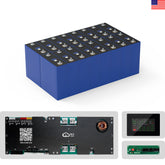

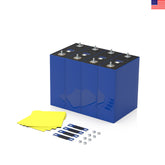
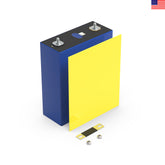
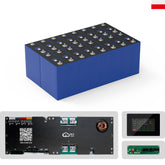

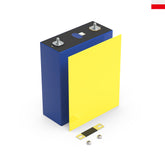

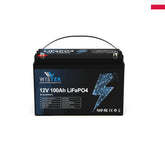
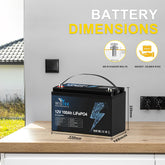


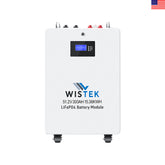
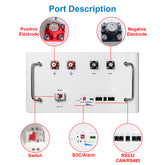
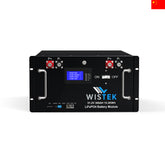
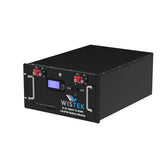


Leave a comment
All blog comments are checked prior to publishing